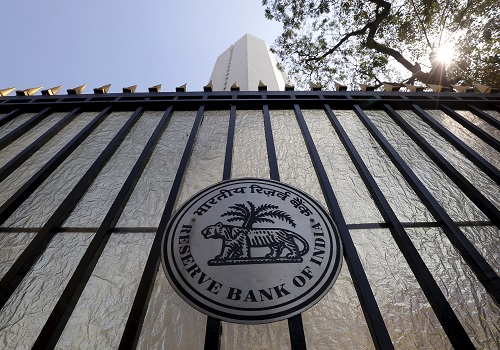Higher Exports in Global Soybean, RM Seed and Cotton to Lift Prices - Choice Broking

Follow us Now on Telegram ! Get daily 10 - 12 important updates on Business, Finance and Investment. Join our Telegram Channel
Higher Exports in Global Soybean, RM Seed and Cotton to Lift Prices
As per the recent WASDE Monthly report, this month's 2020-21 U.S. soybean supply and use projections for 2020-21 are mostly unchanged this month. With soybean crush and exports projected at 2.20 billion bushels (1 bushel = 27.22 kgs) and 2.25 billion bushels, respectively, ending stocks remain at 120 million bushels, down 405 million from last year’s record. Global 2020-21 oilseed supply and demand forecasts include higher production, exports, and ending stocks.
Global production is raised 0.7 million tonnes to 595.8 million tonnes, with higher soybean and rapeseed partly offset by lower palm kernel, cottonseed, and sunflower seed. Soybean production for Brazil is raised by 1 million tonnes to 134 million tonnes, reflecting a revision to the 2019-20 crop and this season's expected yield trend. India’s soybean production is raised 0.2 million tonnes to 10.7 million tonnes based on updated government area data. Conversely, Argentina’s soybean production is reduced 0.5 million tonnes to 47.5 million tonnes due to dry weather conditions over the past month.
Global oilseed exports are raised 0.8 million tonnes to 194.7 million tonnes, mainly on higher rapeseed exports for Ukraine and Australia. Rapeseed imports are increased for the EU-27+UK where the crop is also raised to 17.1 million tonnes based on updated government data. Global soybean crush is forecast up by 1.6 million tonnes to 323.6 million tonnes as higher crush for Argentina and Brazil is partly offset by lower crush for China. Higher crush in Argentina results in higher meal and oil exports. Soybean crush for China is lowered by 1 million tonnes to 98 million tonnes based on data to date. Global soybean stocks are slightly higher, with increased stocks for China and Brazil that are mostly offset by lower stocks for Argentina.
This month’s 2020-21 U.S. cotton forecasts show lower production, consumption, and ending stocks relative to last month. Production is reduced by 250,000 bales (1 bale =170 kgs) to 14.7 million bales, based on the March 9 Cotton Ginnings report. The final estimates for this season's U.S. area, yield, and production will be published in the May 2021 Crop Production report. Consumption is reduced by 100,000 bales due to the industry's lagging recovery from the previous year’s sharp losses. Ending stocks are 100,000 bales lower this month at 4.2 million bales.
The global 2020-21 cotton supply and demand estimates show lower production and ending stocks compared with last month, but higher mill use and trade. Estimated global production is reduced nearly 830,000 bales, largely due to lower Brazilian and U.S. production. Cotton import pace and indications of recovering global consumption helped boost consumption estimates for Turkey, Bangladesh, Pakistan, and Vietnam, more than offsetting lower projections for the United States and Taiwan. Imports are also projected higher in the countries with larger consumption, and the forecast for 2020-21 world trade is more than 600,000 bales higher this month. On the export side, higher Indian exports account for most of the increase as auctions by the Cotton Corporation of India have released much of the cotton purchased last year under the Minimum Support Price program. World ending stocks in 2020-21 are forecasted at 1.1 million bales lower than last month, at 94.6 million bales.
The supply and demand outlook for 2020-21 U.S. wheat is mostly unchanged this month but there are offsetting by-class changes to exports and imports. White wheat exports are raised on continued strong sales and shipments to China and South Korea. Conversely, Hard Red Winter exports are lowered as commitments to several Western Hemisphere markets are below a year ago.
The 2020-21 global wheat outlook is for larger supplies, increased consumption, higher exports, and reduced stocks this month. Supplies are raised by 3.5 million tonnes to 1,077.1 million tonnes. Global production is increased to a record of 776.8 million tonnes, mainly on higher Australia production on the latest ABARES estimate. Australia’s production is raised to a record 33.0 million tonnes, surpassing the previous 2016-17 record of 31.8 million. World 2020-21 consumption is increased by 6.6 million tonnes to 775.9 million tonnes, mostly on higher feed and residual use for China. Auction sales of China’s old-crop wheat stocks were large in January and February as its domestic corn prices remain at a premium to wheat. This is expected to further heighten China’s 2020-21 wheat feed and residual use, raised by 5.0 million tonnes to a record of 35.0 million tonnes. Projected 2020-21 global trade is raised 2.9 million tonnes to a record 197.7 million tonnes, mostly on higher exports by Australia and Canada. Australia’s exports are raised on greater exportable supplies while Canada’s exports are increased on a continued strong pace. The largest import changes this month are for China, where imports are raised to 10.5 million tonnes, respectively, on a continued robust pace. Projected 2020-21 imports for both countries are well above their 2019-20 imports. Projected 2020-21 world ending stocks are lowered by 3.0 million tonnes to 301.2 million tonnes with most of the reduction due to increased consumption for China. However, global stocks are still slightly higher than 2019-20 with China and India holding 50% and 9% of the total, respectively
* Outlook: For the coming month, global Wheat futures is estimated to witness bullish trend due greater supplies, increased consumption, higher exports, and reduced stocks. Lower production, higher exports, and lower ending stocks relative to last month in United States is forecasted to bring bullish trend in global Cotton prices during the coming weeks. Moreover, lower production, higher exports and crush, and lower ending stocks in United States is expected to support CBOT Soybean prices in the month ahead.
To Read Complete Report & Disclaimer Click Here
Please refer disclaimer at https://choicebroking.in/disclaimer
Views express by all participants are for information & academic purpose only. Kindly read disclaimer before referring below views. Click Here For Disclaimer












 320-x-100_uti_gold.jpg" alt="Advertisement">
320-x-100_uti_gold.jpg" alt="Advertisement">












